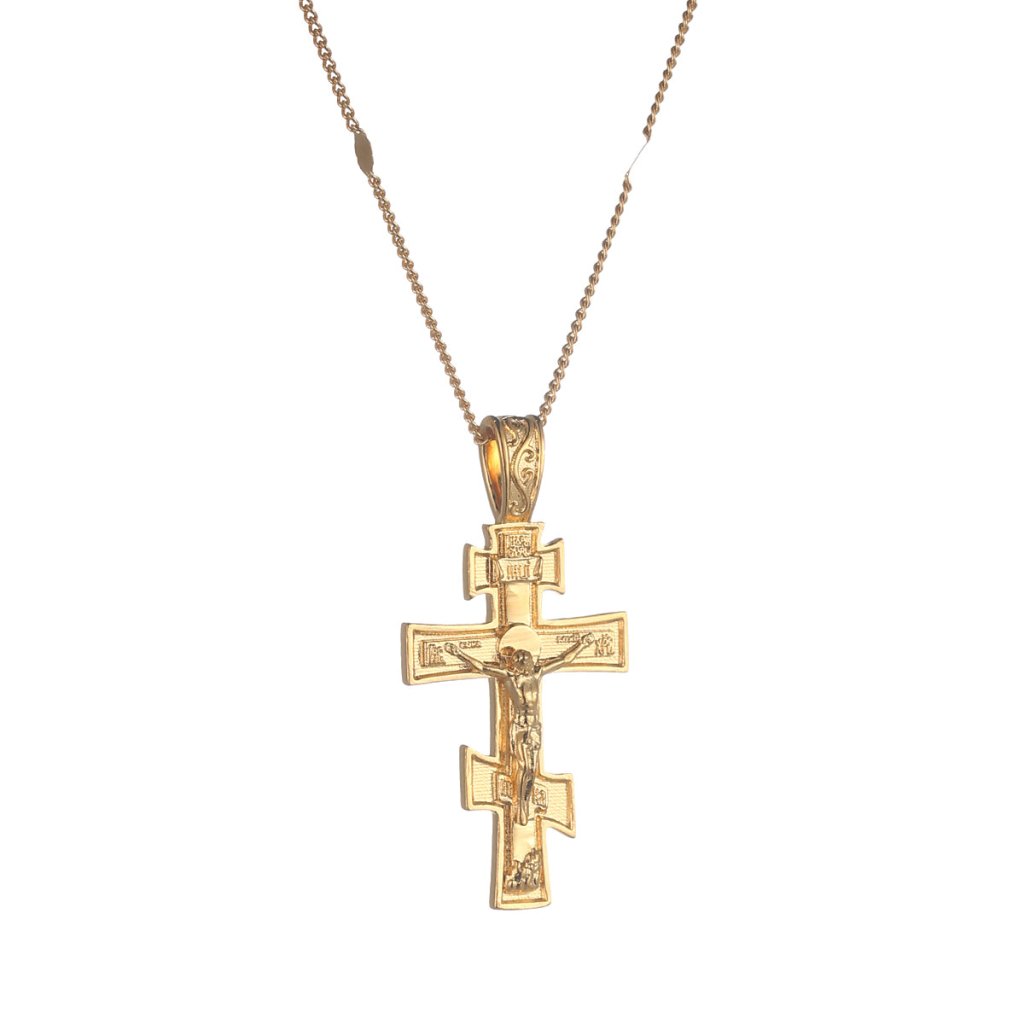The Orthodox Cross: Protection and Personal Fulfillment
For most Orthodox people, the symbol of the cross is of vital importance in daily life.
Whether we are talking about formal processions and ceremonies during which a richly decorated Orthodox cross passes through a town or village, or whether we are talking about objects of piety that the people wear and venerate on a daily basis: the Orthodox cross is certainly a major cultural element in Russia and Eastern Europe.
Contents :
The importance of the sign of the cross among the Orthodox
Russian Orthodox cross: details and symbolism of the crucifixion

The importance of the sign of the cross among the Orthodox
Before kissing an icon (a very widespread practice in these Churches), the Orthodox Christian must cross himself and pray on a cross in order to show and seal his relationship with Christ. According to some more superstitious people, this would also have the effect of attracting the Lord's protection and good graces.
The Orthodox cross also reminds us of those carried in their hands by Christian martyrs who, walking to their death, used this symbol as the source of strength that allowed them to transform the pain of execution into great personal accomplishment..
For Eastern Christians, the Orthodox cross therefore presents itself today as the personal protector of all the faithful, in the midst of a world which can sometimes seem confusing, as was the case for the believers who preceded us.
In short, Christian spirituality carries unique values that only it has the courage to carry.
If you also share this opinion, take a look at this particular collection, which brings together all the Christian objects of piety on our site.
Russian Orthodox cross: details and symbolism of the crucifixion
Whether we are talking about a Russian Orthodox cross or a Slavic cross, all of them will differ from the classic Western cross: in fact, this model generally has three crossbars (two horizontal and the third a little oblique).
To give you a good idea of what we are talking about, you can refer to this pendant from our site, which presents such a cross model.
In short, each of these bars carries a unique meaning that is good to understand:
- The top bar of the Russian Orthodox cross represents the wooden sign that hung above Christ at the time of his crucifixion. Pontius Pilate had “Jesus of Nazareth, King of the Jews” written there.
- The bar in the middle shows us where Christ's hands were nailed.
- The lower bar of the Russian cross symbolizes the footrest. According to Russian Orthodox tradition, Jesus' feet are depicted as nailed not at one point but each on two sides of the footstool.
The fact that this bar of the Russian Orthodox cross is oblique teaches us an important point from the Bible and the Gospels...
In reality, two thieves were crucified alongside Jesus. One of them (the one on his right) repented to the Lord before dying, while the other refused.
So, the orientation of the bottom bar of the cross shows us the direction to take. It somehow points to heaven.
If you visit Moscow, Saint Petersburg or just Russia in general, look towards the church bell towers and you will see a very strange custom: the Russian Orthodox cross which surmounts it would not have all its branches aligned!
Don't worry, this is not a lack of application from our friends further east. Like the roosters of our bell towers, the upper bar simply has the particularity of pointing towards the North.
This practical aspect of the Russian Orthodox cross has made it the center of all the villages in the country.

The Greek cross: a different origin and meaning
The Greek cross is a very ancient form of the Christian cross. It actually predates the traditional model that we can find above most of our altars.
It was also the Emperor Justinian who made it the symbol of Christianity, after his predecessor, the Emperor Julian, had decided to ban this symbol.
Yes, knowing which Orthodox cross to use (or even simply whether it was good to use one) is not a subject that is new!
In short, the Greek cross differs from most others in that its four arms are of equal length. This symmetry makes it easy to use in art, which may explain why many have used it as architectural ornament or for making sacred furniture and jewelry.
We can suspect this, but its particular shape is clearly not intended to represent the cross on which Jesus died. According to some theories, the Greek cross rather shows us the four cardinal directions and thus represents the duty to spread the Gospel and the word of God throughout the Earth.
This is one of the reasons why it occupies a special place in the hearts of many priests and missionaries. If this type of fervent commitment speaks to you, here is also an external resource about missionary work in our world today.
In short, alongside this, some specialists (who are, it is true, a minority but are numerous enough for their voices to carry) give the Greek cross a more esoteric meaning.
According to them, it would result in four signs of the zodiac which would each correspond to one of the Evangelists. According to this perspective, the Greek cross is called the "cross of the earth", and would be used in certain alchemical magic rituals.
Lucky charm featured in this article

Necklace with a Russian Orthodox Cross
See more

